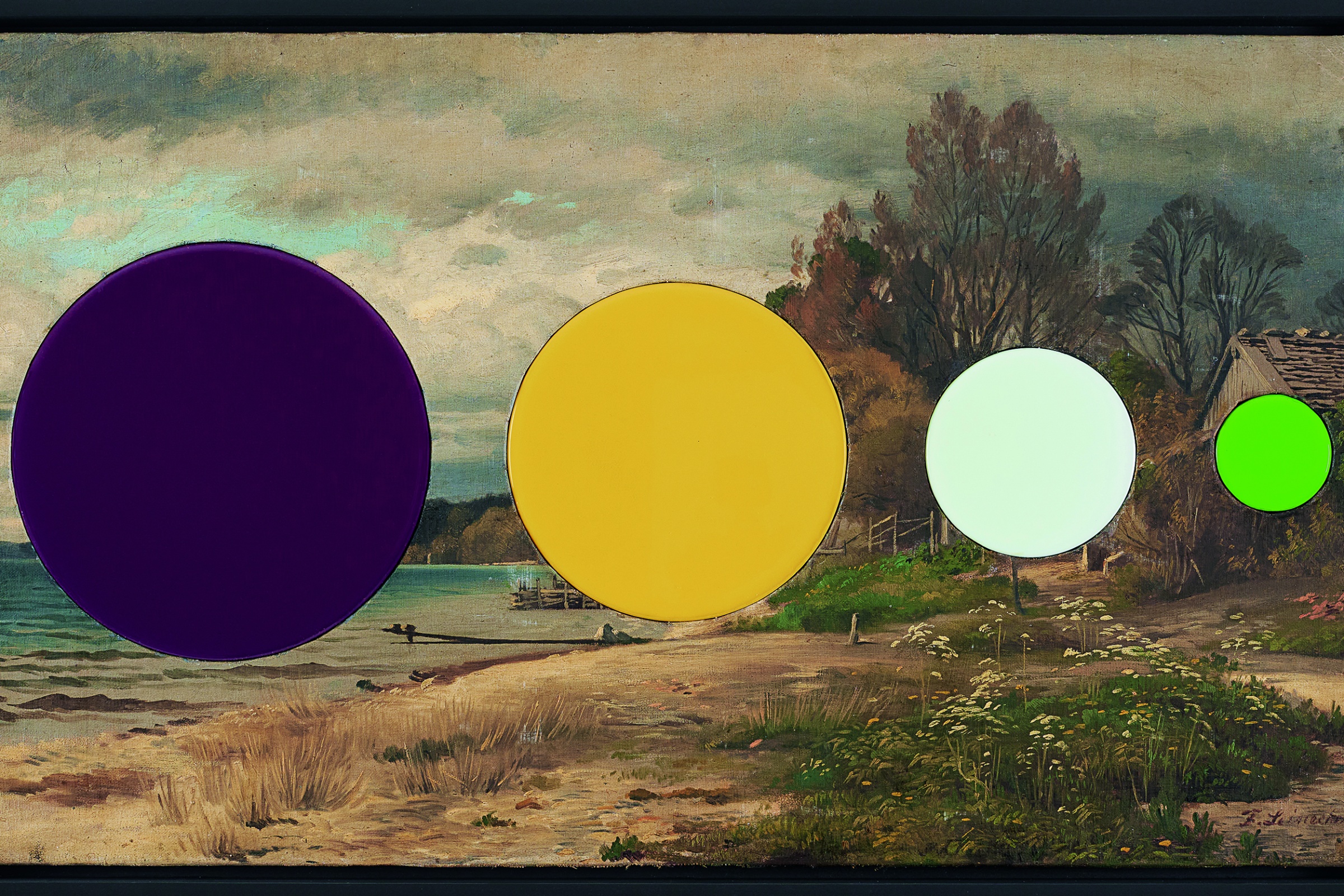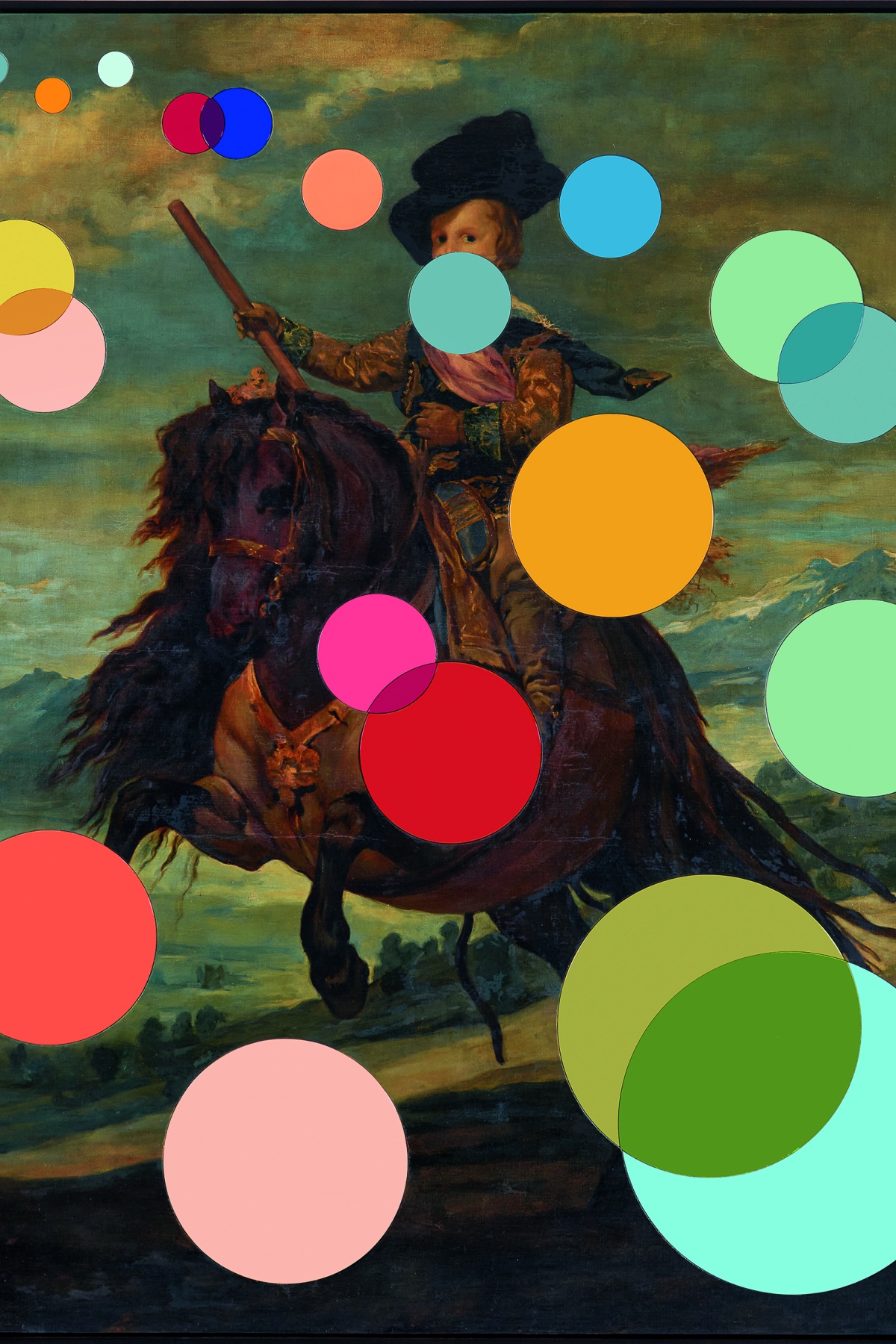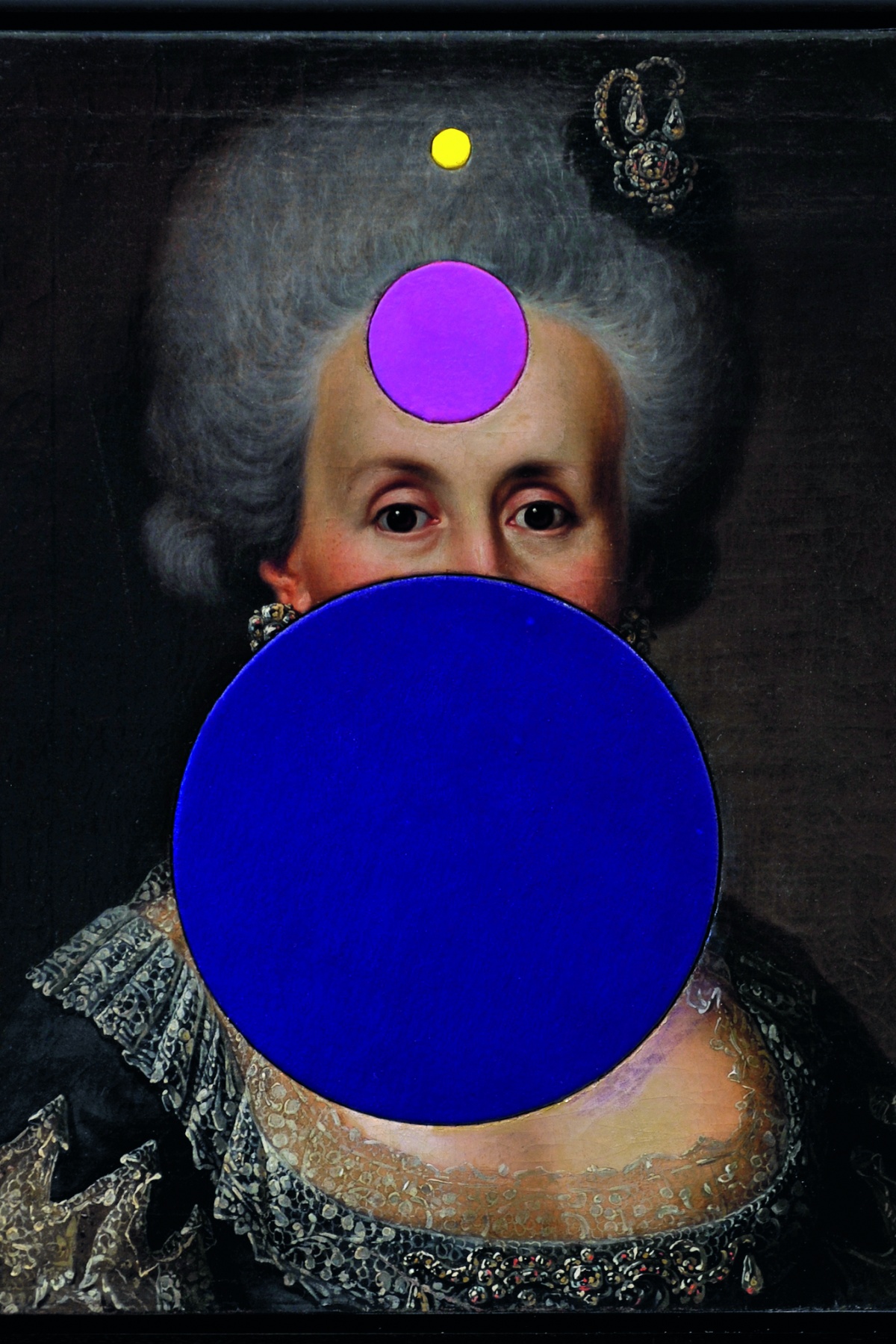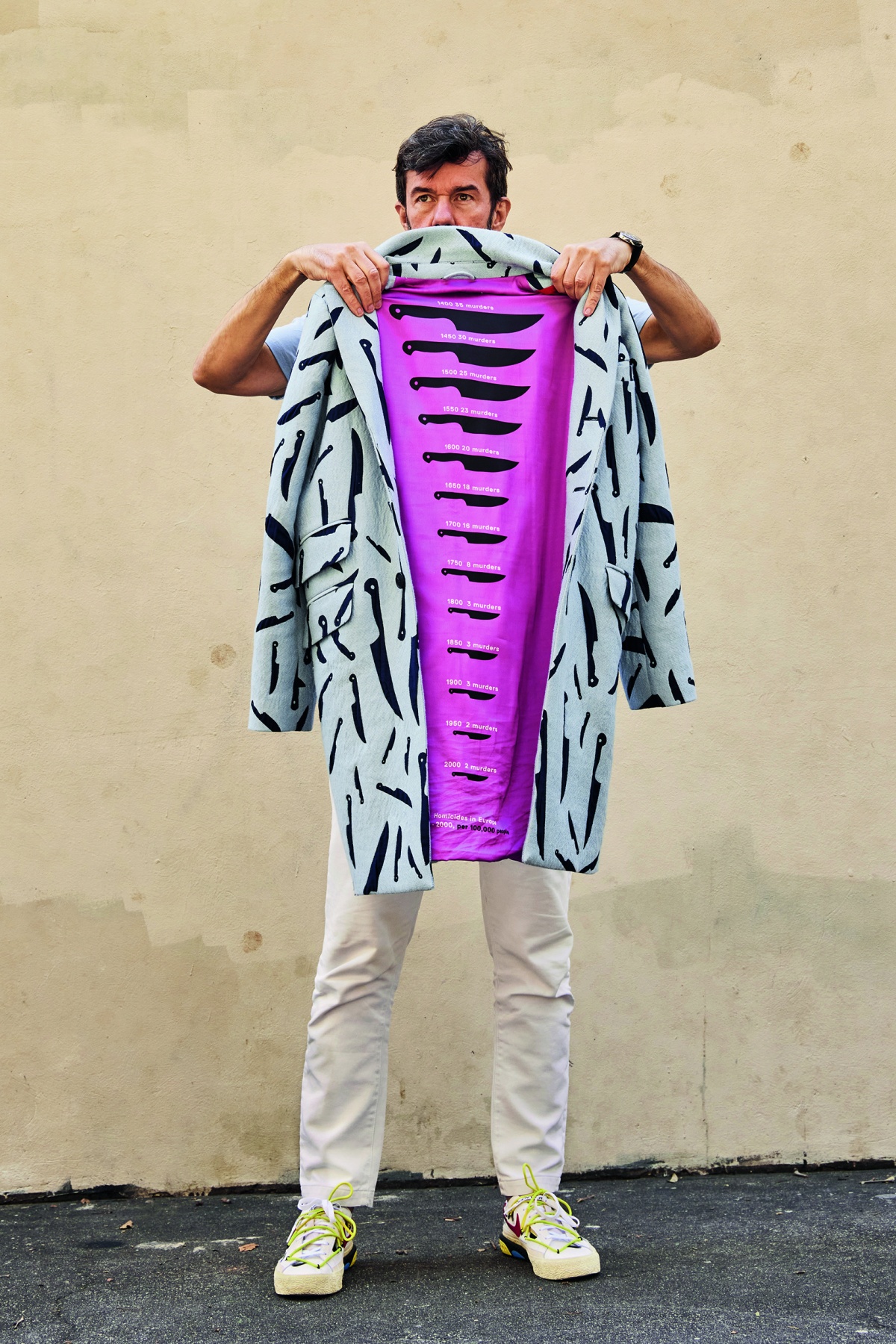Stefan Sagmeister insists that now is better. In a lot of ways the renowned Austrian graphic designer, mostly known for designing album covers for The Rolling Stones, Lou Reed, and Talking Heads, is right. In the last century global poverty has shrunk, literacy rates have risen, and there are more women elected to government offices than ever before.

Stefan Sagmeister. Photo by Victor G. Jeffreys II
Stefan transformed these inspiring facts into abstract data visualizations, which are collected in his new book, Now is Better, published by Phaidon. Stefan began this new body of paintings, a sharp contrast from the Grammy-award winning packaging design he did for David Byrne and Brian Eno during the bleakest turn of the pandemic. He was searching for positivity amongst the constant stream of data in the form of dwindling ICU beds and death tolls, and amassed so many good datasets that he stuffed more than 100 paintings into the book’s pages, which are wrapped in a literal and metaphorical silver lining.
The work is unquestionably beautiful. Stefan uses Victorian paintings as the base for his infographics, inspired by the inventory of his grandparents, antique dealers in Bregenz, Austria. The first two paintings he used for the series were discovered in their attic. Stefan drilled out sections of the canvases and filled them with bright, hard-edge, geometric data atop the portraits of the European bourgeois, contrasting the old world with the new.
- THESE SELF-EVIDENT TRUTHS. Image credit: Phillip Reed and Andreas Vesterlund (page 22) Number of democratic countries worldwide, 1810–2010
- WOMAN I. Image credit: Phillip Reed and Andreas Vesterlund (page 13) Percentage of countries in which women have the right to vote, 1900–2000
Even in the flat pages, the chunks of new canvas pop off, showing the round, beveled textures. “Literacy I” depicts a robed man with a book staring pensively into the distance. His body is broken up by three ovals, each larger than the one above it, that depict the percentage of the world’s population who can read and write from 1900-2000. On close inspection, the simplistic, planar forms, which are solidly filled to jump off the oil painting’s darker palettes, contain nuanced highlights and shadows, and precisely rendered lines.
- LIFE. Image credit: Henry Hargreaves (page 188) Japanese cotton shirt with cotton inserts Average global life expectancy, 1800 vs 2020
- MURDEROUS COAT. Image credit: Henry Hargreaves (page 181) Tapestry fabric created in France, coat made in New York. Number of homicides in Europe per 100,000 people, 1400–2000
The book’s thesis works best when the information aligns with unquestionably progressive social values. The cover, “Her Mark,” shows how many countries have granted women suffrage between 1916-2017. Likewise, the tiny sky blue dot on “Babies” is massively overshadowed by a purple squircle, which represents the decline of women dying in childbirth between 1915-2015. These facts are so feel-good that Stefan even printed them on a line of clothing, Sagmeister123, which includes an enviable trench coat depicting growing literacy rates.
But Stefan’s arguments about a better world falter when we think about the people left in the margins of his data. In multiple paintings he touts the number of democracies in the world—America in 1776 was the first, but now 96 of 167 countries can be considered democratic—and uses this achievement to dismiss concerns about a rising right-wing movement in Europe. He tells the anecdote of a lawyer who laments fascist parties gaining traction in Poland, Hungary, and Brazil, and concludes that “this highly intelligent lawyer did not understand the reality of the world he lives in.” Whether consciously or not, Stefan frames the suffering of the people affected by these new regimes as irrelevant, because the world as a whole is better.

A spread in Now is Better, published by Phaidon.
The book’s introduction was written by Steven Pinker, the economist who has gone on record to say identity politics is “an enemy of reason and Enlightenment values.” The choice to view the world as a good place comes from a position of privilege, where, likely, you do not come from a marginalized group, or you have achieved enough wealth that you can separate yourself into the obliviously comfortable ruling class that, ironically, Stefan incorporates into Now is Better as a symbol of the dark past.

CARBON I. Image credit: Phillip Reed and Andreas Vesterlund (page 68) Cumulative emissions of CO₂ into the atmosphere, 1751–2015.
The only nuanced data Stefan juggles relates to climate change. Instead of showing that the world has gotten better, paintings like “Doing/Dumping,” in which black shapes engulf a coastal scene, show the amount of greenhouse gasses produced by activities like commercial production, electricity use, agriculture, and travel. These works, lacking a comparison to the past, are snapshots of the present and steer thinking towards the future. It makes us wonder what can be done to make these shapes shrink, to get an unobstructed view of the fishermen rowing to shore.
Phaidon publishes beautiful books, and Now is Better is a lovely collection of new works that transfers data visualization from paintings to clothing and product design. It is exciting to see how Stefan moves his concept from visual art to a branded experience, and it works well when the facts he chooses celebrate the increase of literacy rates, voting rights, and ice cream shops. While the book is skillfully assembled, its curation is best taken with a grain of salt, as many of the world’s biggest challenges around equity and equality are missing.
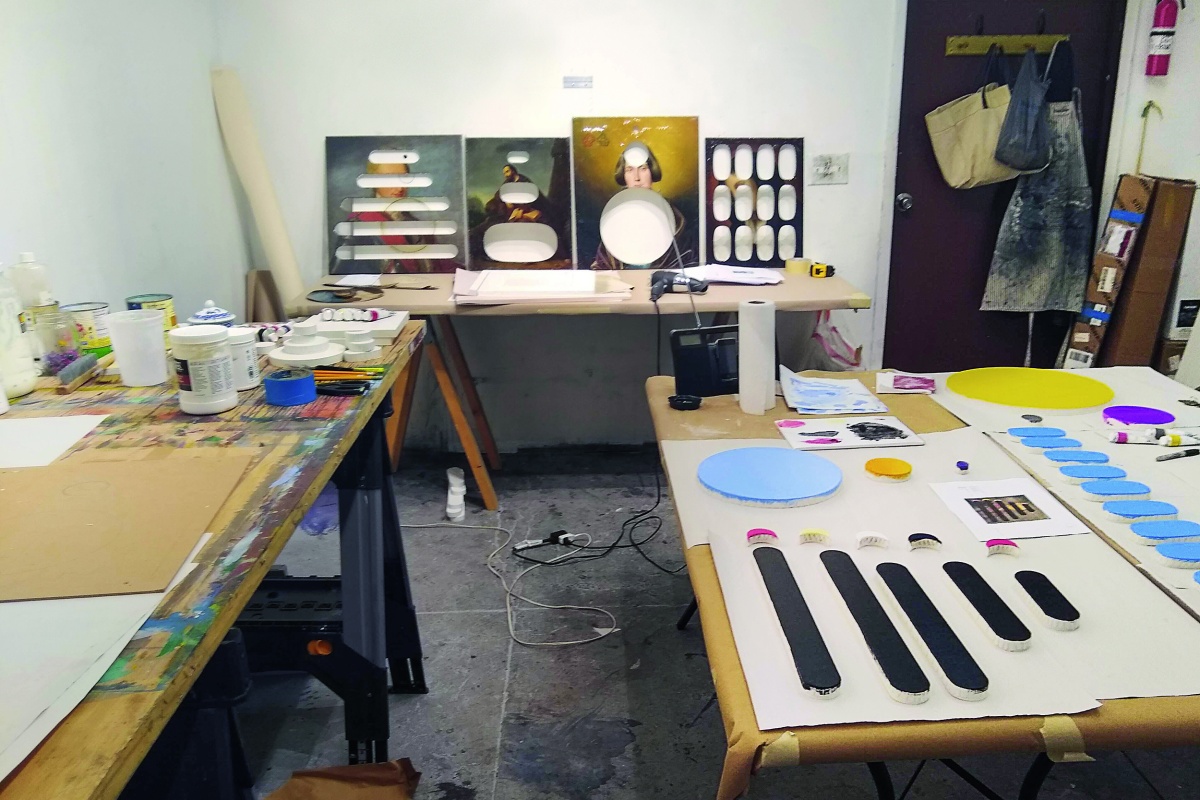
Historical paintings in the Sagmeister Inc. studio, Brooklyn, New York, awaiting inserts. Image credit: Ting Yih (pages 122-123)
